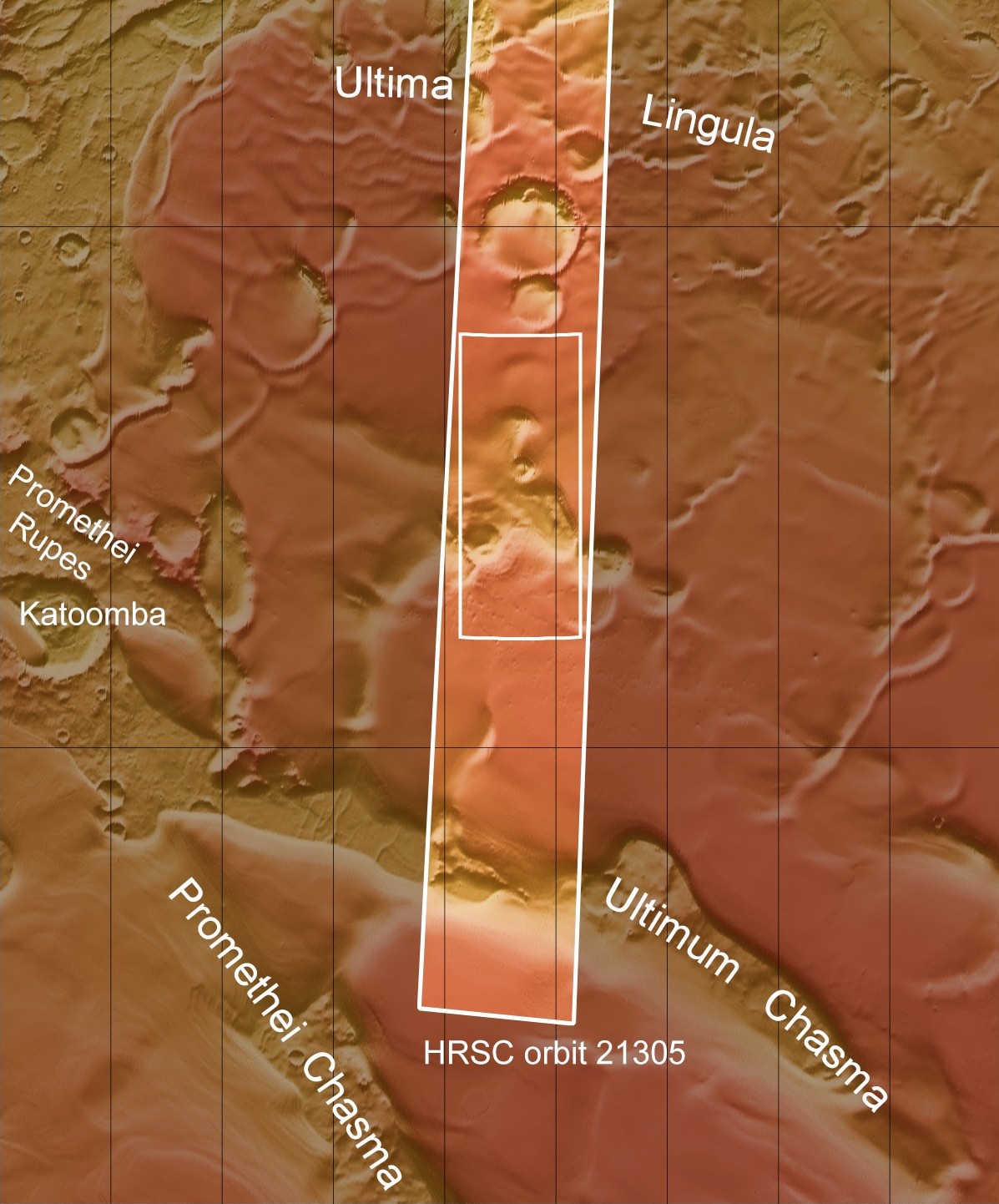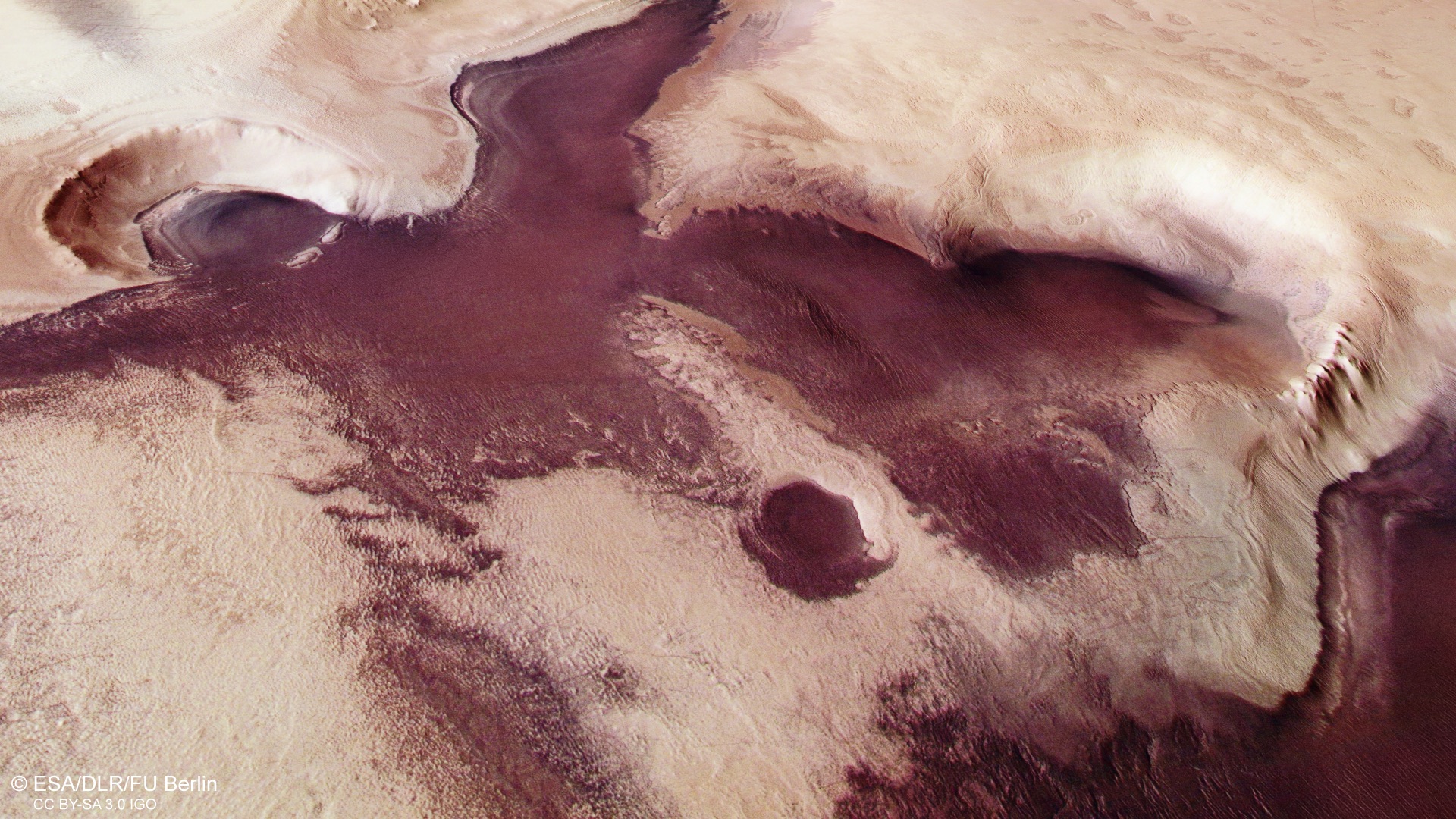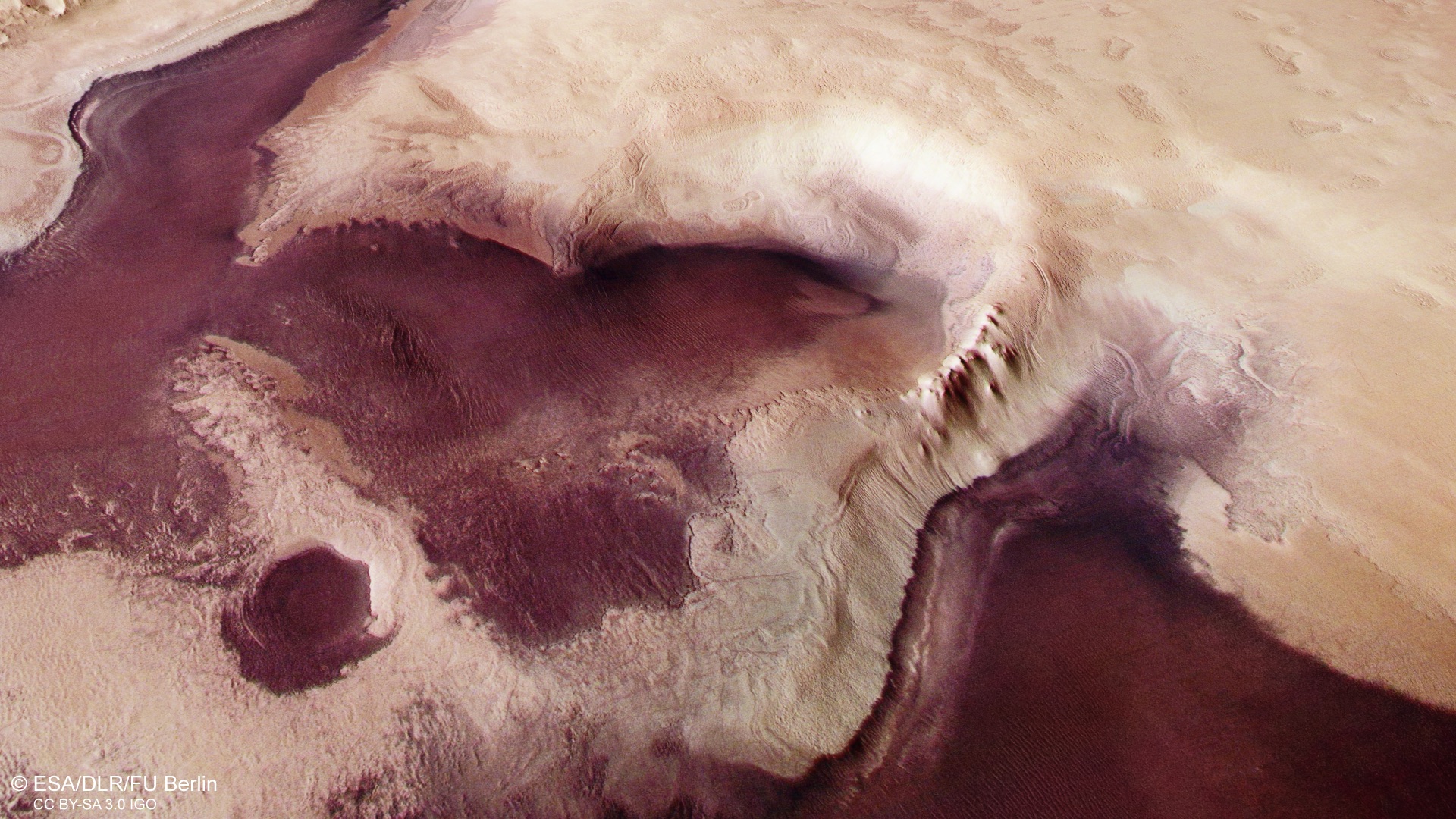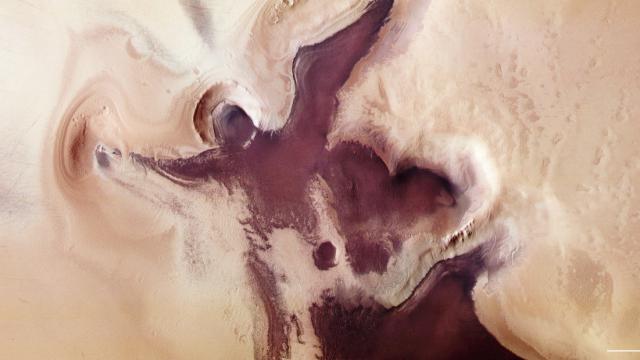A European satellite has spotted an unbelievably realistic angelic figure — complete with wings, halo, and heart — in the southern polar region of Mars. It looks as if some Martian artist painted the scene to wish us peace and joy for the holiday season, but there’s a perfectly good scientific explanation for the surreal display.

This festive scene was captured by the High Resolution Camera aboard the European Space Agency’s Mars Express orbiter. Normally, this part of the Red Planet is covered in a one-mile-thick (1.6-kilometre-thick) sheet of ice, but it’s currently summer in the southern polar region of Mars. With the ice temporarily gone, Mars Express managed to take photos of the landscape, providing us with another example of pareidolia (Mars is notorious for making us see things that aren’t actually there).
Indeed, this apparent painting of a haloed angel, with right arm outstretched and a heart by its side, is the result of several geological processes, as the ESA explains.
The contrasting colours aren’t atop a creamy cinnamon and cocoa latte, but rather a sprawling dune field filled with dark, rock-forming minerals (mostly pyroxene and olivine, which are also available on Earth).

What appears to be the tip of the angel’s right hand is probably a large sublimation pit. These pits form when ice turns directly to gas, leaving empty holes behind. Sublimation pits can be seen elsewhere in the solar system, including the dwarf planet Pluto.
The halo — perhaps the most eye-grabbing feature of the festive scene — is actually the rim of an impact crater. When whatever object it was smashed into Mars, it kicked up several layers of deposits from below. The angel’s head is composed of these dark deposits, which rests fortuitously within the ancient impact crater, giving the impression of a surrounding halo.

To the right of the figure is a steep escarpment, which outlines much of the heart. Formed from millions of years of erosion, this striking formation contains cliffs and steep slopes, and some really dark deposits, the origin of which is unclear.
As the ESA points out, scientists believe these dark materials “once existed deeper below the surface in layers of material formed by ancient volcanic activity.” And though this material was once buried, “it has since been brought to the surface by ongoing impacts and erosion, and then distributed more widely across the planet by martian winds.”
[referenced id=”1142911″ url=”https://gizmodo.com.au/2018/12/who-wants-to-go-ice-skating-across-this-wintry-martian-crater/” thumb=”” title=”Who Wants To Go Ice Skating Across This Wintry Martian Crater?” excerpt=”Korolev crater on Mars boasts an ice rink measuring over 80km wide — and it’s one of the most spectacular surface features on the Red Planet, as the latest image from the Mars Express spacecraft reveals.”]
That’s how this super cool optical illusion was forged by some equally cool geological processes. Mars Express has spotted fascinating features on Mars before, including a 80 km-wide (80.5-kilometre-wide) ice rink in Korolev crater and a gigantic cinnamon bun at the north pole.
